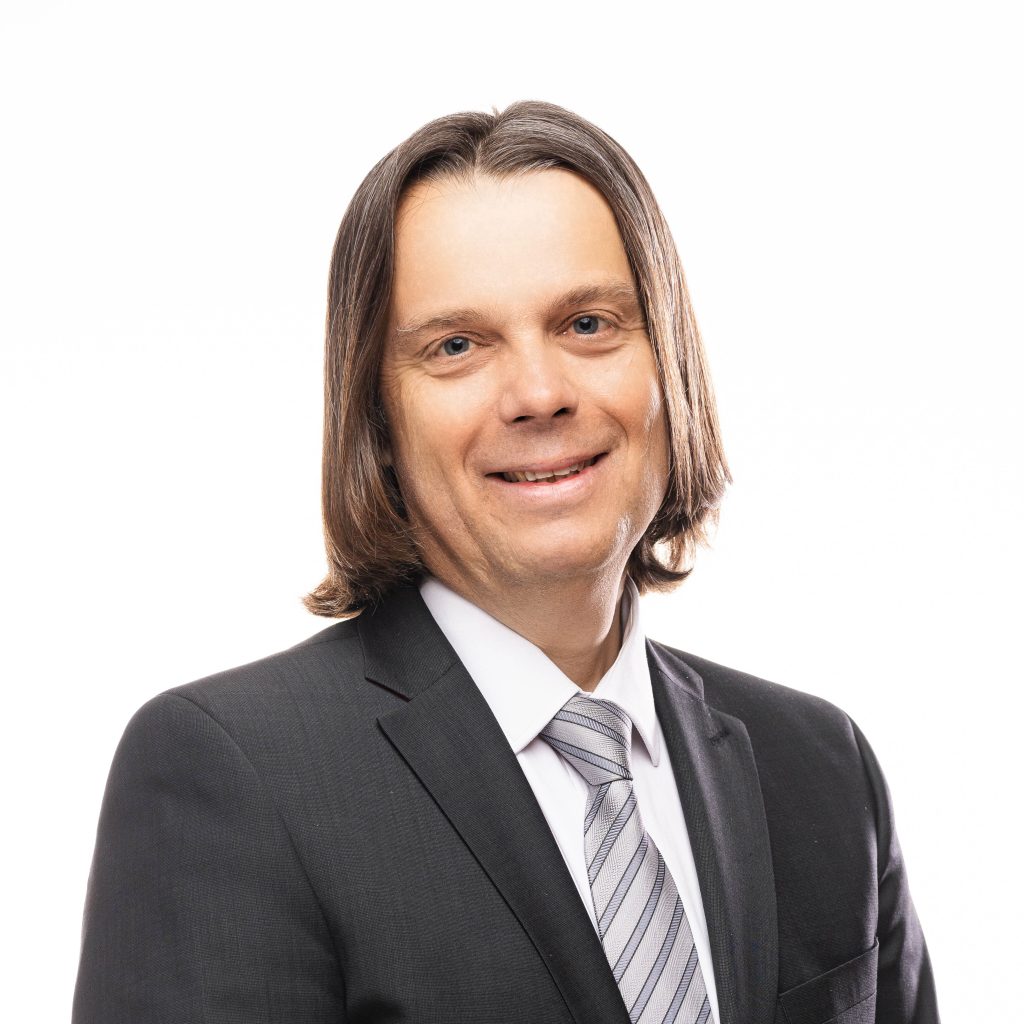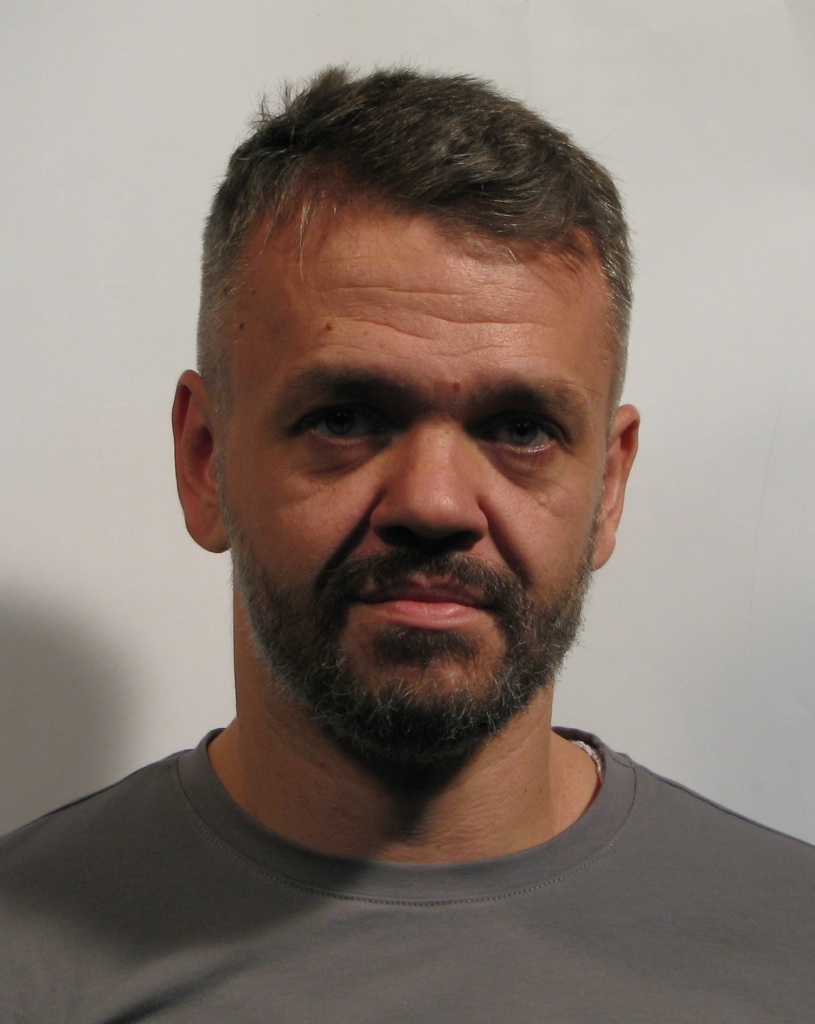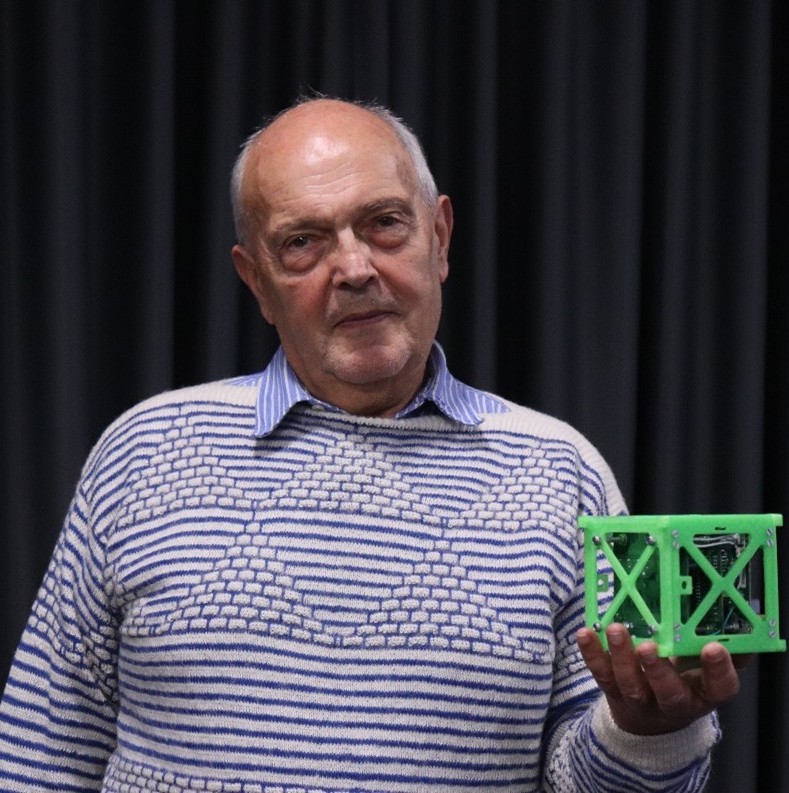Computational Models in Applied Electromagnetics
Dragan Poljak, PhD
University of Split, FESB, Split, Croatia
Tutorial starts with some general aspects of computational electromagnetics and electromagnetic compatibility (EMC). The introduction also outlines some well-established analytical and numerical solution methods.
First, a crash-course on the theory of thin wire antennas and related numerical solution methods for various integral equations in both frequency and time domain will be presented. Related computational examples include to dipoles, Yagi-Uda arrays and logarithmic-periodic dipole antennas (LPDA). In particular, some recent applications to air trafic control and ground penetrating radar (GPR) will be discussed.
Next, full wave (antenna) models for various thin wire structures, from rather simple to realistic complex geometries, will be addressed. This will be followed by the analysis of overhead/belowground transmission lines. A trade-off between the use of rigorous full wave models and approximate transmission line (TL) approach will be emphasized with particular focus to PLC (Power Line Communications) configurations, lightning channel, realistic grounding systems for wind turbines.
Tutorial will also deal with the human exposure to electromagnetic fields. Low frequency, high frequency and transient exposures related to possible adverse health effects will be discussed addressing electromagnetic interference (EMI) sources such as power lines, transformer substations, wireless power transfer (WPT) base stations antennas for 2G/3G/4G and 5G systems. Some biomedical application of electromagnetic fields, with particular emphasis on transcranial magnetic stimulation (TMS), transcranial electric stimulation (TES) and nerve fiber stimulation, will be also discussed.
Furthermore a stochastic approach (featuring the use of stochastic collocation (SC) technique and analysis of variance (ANOVA)) to analysis of GPR, grounding electrodes, human exposure to electromagnetic fields and biomedical application of electromagnetic fields will be outlined.
The presentation will end up with some topics in magnetohydrodynamics pertaining to the modeling of plasma physics phenomena pertaining to the applications in thermonuclear fusion arising with EUROfusion projects activities.
In particular an overview of the activities pertaining to the analysis of the EMC/EMI of electrical and electronic equipment and grounding system in the within the framework of EUROfusion IFMIF-DONES project will be given.

Dragan Poljak received his PhD in el. Eng. in 1996 from the Univ. of Split, Croatia. He is the Full Prof. at Dept. of Electron. and Computing, Univ. of Split. His research interests include computational electromagnetics (CEM), electromagnetic compatibility (EMC), bioelectromagnetics, ground penetrating radar (GPR), magnetohydrodynamics (MHD) and plasma physics). To date Prof. Poljak has published around 200 journal, and more than 300 conference papers, respectively, and authored some books, e.g. two by Wiley, one by IEEE Press, New Jersey and one by Elsevier, St Louis. He is a Senior member of IEEE, a member of Editorial Board of Eng. Anal. with Boundary Elements, Math. Problems in Eng. And IET Sci. Measur. & Techn. He was awarded by several prizes for his research achievements, such as National Prize for Science (2004 and 2023), Croatian sect. of IEEE annual Award (2016), Technical Achievement Award of the IEEE EMC Society (2019), George Green Medal from University of Mississippi (2021) and Certificate of Appreciation from IEEE Standards Associations (2022). From May 2013 to June 2021 Prof. Poljak was a member of the board of the Croatian Science Foundation. He was involved in ITER physics EUROfusion collaboration and he is currently involved in DONES EUROfusion collaboration and in Croatian Center for excellence in research for tech. sciences. He is active in few Working Groups of IEEE/Internat. Committee on Electromagnetic Safety (ICES) Tech. Comm. 95 SC6 EMF Dosimetry Modeling.
Simulation and modelling of particle laden flows
Jure Ravnik, PhD
University of Maribor, Maribor, Slovenia
In this tutorial, we will examine the study and practical importance of particle-laden flows ranging from dilute suspensions of spherical rigid droplets to inhomogeneous soft deformable particles.
Particulate systems are widely used in various industries such as cement, petrochemical, wastewater treatment, and pharmaceutical, where different types of particles are transported, mixed, stored, or segregated. In addition, nonspherical particles are widely present in nature, from the composition of blood to dust particles in the air. On the other hand, not all particles are rigid nor are they homogenous. Research in the field of soft deformable particles is less established. Nevertheless, there are relevant examples of suspensions, both of industrial and scientific interest, where the suspension consists of soft, non-linearly deformable micron- and submicron-sized particles that have a non-spherical shape due to the deformability of the particles. These particles include microgels, filled polymers, biological cells, as well as liquid droplets, vesicles and liquid capsules, with elastic or viscoelastic properties. To model or control systems which include these soft, deformable particles, the governing physics of the particle system must be well understood.
We will showcase how by simulating airflow patterns using computational fluid dynamics (CFD), we can model how droplets containing pathogens are dispersed during human activities such as breathing or coughing. These simulations provide insights into the physical mechanisms involved and help assess infection risks. CFD tools also enable the evaluation of short-term, short-range flow dynamics, aiding in the prediction of droplet dispersion patterns.
We will stress the importance of accurate modeling, as it informs strategies to mitigate disease spread. For instance, improving air quality management can reduce exposure to pathogen-laden particles, thereby lowering infection risks. Additionally, understanding the dynamics of particle motion helps identify key factors influencing transmission, such as droplet size, velocity, and trajectory.
Beyond the specific case of COVID-19, these we will present the broader implications of particle-laden flows in various environmental and industrial applications by focusing on non-spherical, inhomogeneous and deformable particles and showcase the integration of advanced computational tools with physical modeling as a powerful approach to addressing complex flow problems.
Suggested reading:
- Wedel, Jana, Paul Steinmann, František Prinz, František Lízal, Matjaž Hriberšek, and Jure Ravnik. “Mass Distribution Impacts on Particle Translation and Orientation Dynamics in Dilute Flows.” Powder Technology 452 (February 2025): 120424. https://doi.org/10.1016/j.powtec.2024.120424.
- Wedel, Jana, Mitja Štrakl, Matjaž Hriberšek, Paul Steinmann, and Jure Ravnik. “A Novel Particle–Particle and Particle–Wall Collision Model for Superellipsoidal Particles.” Computational Particle Mechanics 11, no. 1 (February 2024): 211–34. https://doi.org/10.1007/s40571-023-00618-6.
- Wedel, Jana, Matjaž Hriberšek, Paul Steinmann, and Jure Ravnik. “Coefficient of Tangential Restitution for Non-Spherical Particles.” Powder Technology 437 (March 2024): 119526. https://doi.org/10.1016/j.powtec.2024.119526.
- Wedel, Jana, Matjaž Hriberšek, Jure Ravnik, and Paul Steinmann. “A Novel Pseudo-Rigid Body Approach to the Non-Linear Dynamics of Soft Micro-Particles in Dilute Viscous Flow.” Journal of Computational Physics 519 (December 2024): 113377. https://doi.org/10.1016/j.jcp.2024.113377.
- Pallares, Jordi, Alexandre Fabregat, …, Jure Ravnik, …, et al. “Computational Fluid Dynamics Challenge on Indoor Dispersion of Pathogen-Laden Aerosols.” Physics of Fluids 37, no. 2 (February 1, 2025): 025226. https://doi.org/10.1063/5.0252665.

Jure Ravnik is a professor of Power, Process, and Environmental Engineering at the University of Maribor’s Faculty of Mechanical Engineering in Slovenia. His research interests span multiphase and multicomponent fluid flows, turbulence, heat and matter transfer, numerical methods, and approximation methods. He has been involved in various research and development projects at national and EU levels, including the simulation of fluid flows during paper production, nanofluid behavior, and the development of numerical algorithms for diverse applications. Furthermore, Dr. Ravnik actively participates in commissions, societies, and associations, organizes conferences and edits journals, contributing significantly to the academic and research community in the field of transport phenomena modelling. Currently, he serves as the Head of the Laboratory for transport phenomena in solids and fluids and the Head of Academic Assembly of the Faculty of Mechanical Engineering, University of Maribor.
Advanced Computational Approaches for Electric and Magnetic Field Estimation Near Overhead Transmission Lines
Adnan Mujezinović, PhD
University of Sarajevo, Faculty of Electrical Engineering, Sarajevo, Bosnia and Herzegovina
The tutorial begins with a general overview of classical numerical methods used for the calculation of electric fields and magnetic flux densities in the vicinity of overhead transmission lines. Analytical and numerical approaches such as the charge simulation method and Biot-Savart law based method will be briefly reviewed to provide the theoretical foundation.
Following the classical calculation methods, the tutorial will address the modeling and analysis of stationary AC corona on overhead transmission line conductors. Furthermore, the influence of higher-order current harmonics on the distribution of magnetic flux density near overhead lines will be examined.
Subsequently, the tutorial introduces modern computational trends, including the application of machine learning techniques and evolutionary algorithms for field estimation. A method based on artificial neural networks (ANN) will be presented for estimating electric field intensity and magnetic flux density using geometric parameters of overhead lines combined with voltage and current data. Practical computational examples involving different line configurations and operational scenarios will be included. The tutorial will highlight the importance of generating appropriate synthetic datasets based on overhead line configuration algorithms to enhance the training and accuracy of machine learning models.
Further, an approach for estimating magnetic flux density near multi-system overhead transmission lines will be outlined. The method synthesizes the results from individual three-phase systems to produce the total magnetic flux density distribution in the vicinity of multi-circuit lines and transmission corridors with shared infrastructure. A method based on artificial neural networks for estimating higher-order harmonics of magnetic flux density due to current waveform distortion will also be introduced.
In addition, the tutorial will explore the use of metaheuristic algorithms for optimizing parametric functions that describe the spatial distribution of magnetic flux density. These optimization techniques enable improved model fitting and higher accuracy compared to traditional methods.
The tutorial will conclude by demonstrating how the integration of classical modeling techniques with modern machine learning and evolutionary algorithms offers a powerful, accurate, and scalable framework for the estimation of electric and magnetic fields near high-voltage transmission lines.

Adnan Mujezinović received his M.Sc. and Ph.D. degrees in Electrical Engineering from the Faculty of Electrical Engineering, University of Sarajevo, Bosnia and Herzegovina, in 2011 and 2017, respectively. Since 2012, he has been affiliated with the same faculty and currently holds the position of Associate Professor at the Department of Electric Power Engineering. He is a member of the IEEE and CIGRE organizations. He is actively involved in CIGRE activities and currently serves as the Chairman of the D1 Committee of BH K CIGRE. He has authored numerous papers published in international journals and conference proceedings. His research interests include numerical modeling and calculation of electromagnetic fields, cathodic protection systems, and overhead transmission lines.
Introduction to electromagnetic propulsion
Slobodan Danko Bosanac, PhD
Adriatic Aeronautical Association (A3), Croatia
Chemical and electromagnetic propulsion, advantages and disadvantages, and their efficiency in space travel. Types of electromagnetic propulsion, their mechanisms. Basic elements of electromagnetic propulsion: ionization of the neutral gases, confinement and increase of plasma energy, exit to produce thrust. Mechanisms of ionization and their efficiency. Confinement of plasma, transfer of electromagnetic wave energy to charges, theoretical modelling for PIT and ELF propulsion mechanism. Modelling plasma exit nozzle to produce thrust.

Slobodan Danko Bosanac was born in 1946 in Zagreb, where he graduated in theoretical physics from the University of Zagreb in 1968. In 1969, he received a British Science and Research Council fellowship for research in molecular sciences at the University of Sussex in the United Kingdom, where he received his PhD in 1972. Bosanac continued his research with a two-year BSRC postdoctoral fellowship at the University of Bristol in the United Kingdom, and in 1974 he was awarded a research position at the R. Bošković Institute in Zagreb, Croatia, which remained his home institution. With a prestigious one-year scholarship from the Lady Davis Fellowship Trust, Bosanac researched at the Hebrew University of Jerusalem in Israel on the problems of long-lived states and energy transfer in atomic and molecular processes. After this period of consolidating his own research area, Bosanac built his own group at the R. Bošković Institute focused on problems of atomic and molecular energy transfer, electromagnetic interactions, astrophysics and basic concepts of quantum and classical physics. During his research career, Bosanac published about 100 papers, four books, was the principal investigator in several international scientific projects and was actively involved in the popularization of science through publications and lectures. He was a visiting professor at numerous universities: University of Rome “La Sapienza”, University of Florida, University of Kaiserslautern, MPI fur Stromungsforschung in Göttingen, University of Sussex, Harvard University, MIT, Federal University of Minas Gerais, to name just a few. For his research, Bosanac received two Croatian State Awards for Science, in 1997 and 2013. Outside of research, Bosanac was active in projects related to the promotion of science. In 1986, he initiated interdisciplinary conferences bringing together scientists from physics, chemistry, astrophysics and, more recently, molecular biology, to review and discuss important problems in science and technology that have a common denominator. Since then, the conferences have been held biennially under the general title of the Brijuni Conferences. In 2013, he was appointed head of the Swiss Space System branch for Croatia, with the general goal of establishing a Space Science and Technology Center in Croatia, with the main goal of building a spaceport. The company ceased operations in 2017. After this activity on the space science and technology project, Bosanac initiated the idea of a body that would be central to the space program in Croatia. With this concept in mind, the Adriatic Aeronautical Association was founded in 2017, of which Bosanac is now president. Bosanac was president of the Croatian Astronomical Society from 2008 to 2012.
